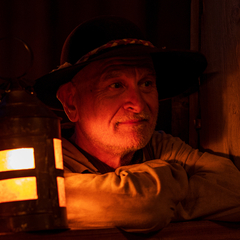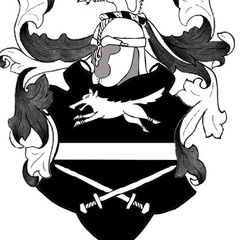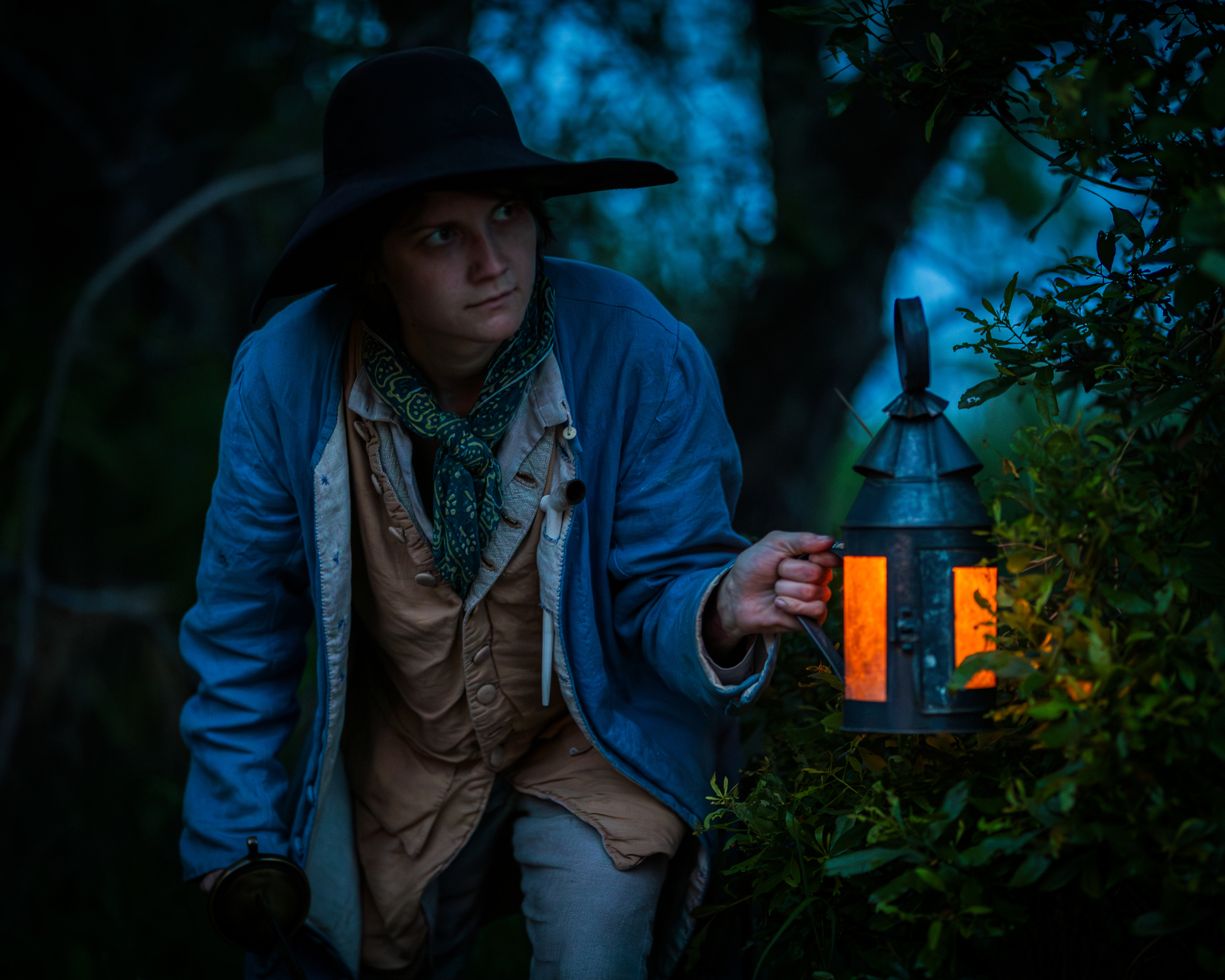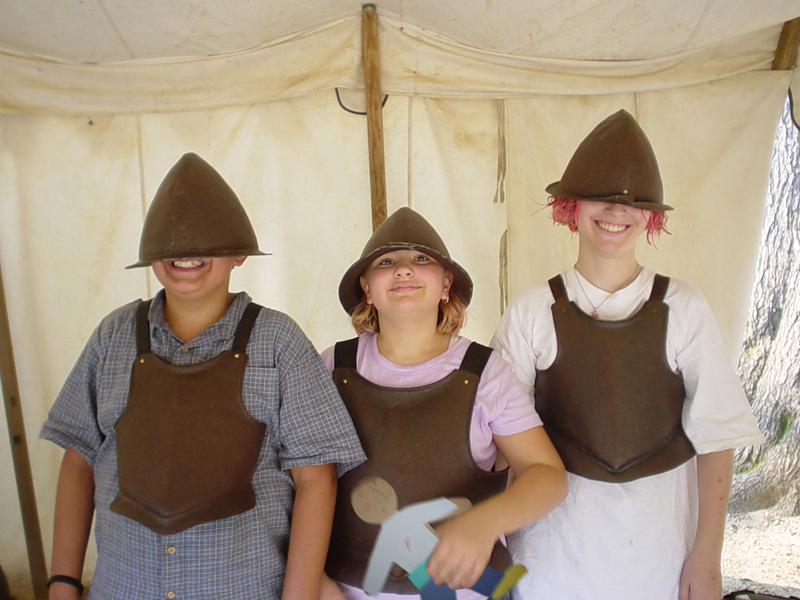Captain Twill
Academic Fight Circle, Research, Share, Discuss & Debate Maritime History.
1,565 topics in this forum
-
- 0 replies
- 3.8k views
Are you interested in what really happened in the Golden Age of Piracy? Do you want to separate fact from fiction? Excellent! Welcome to Captain Twill! Like the main Forums page says, Captain Twill is for "Academic talk on maritime history, research, & interesting info". Does this mean fun is not allowed? Of course not. It does mean that we discuss things in an often rigorous academic way. Some people come into Captain Twill and get confused or upset at the differences. The tone of the discussions here can be very much different than the rest of the Pub. If you don't know about that, Captain Twill can be an upsetting place. So here's a FAQ to read,…
Last reply by Captain Tightpants, -
- 1 follower
- 470 replies
- 21.1k views
NOVEMBER 21, 1724 On this day in 1724, the pirate ship 'Revenge' attacked the British ship 'Sarah'. Most of the crew was set adrift, though some deemed useful were given the option of joining John Gow's crew. Over the next few months, John Gow attacked several other ships. Also on this day in 1996, Intersal Inc., a private research firm, discovered the wreck believed to be the 'Queen Anne’s Revenge'. It was located by Intersal's director of operations, Mike Daniel, who used historical research provided by Intersal's president, Phil Masters and archaeologist David Moore. The vessel is in the Atlantic Ocean in shallow water offshore from Fort Macon State Park (34°41′44″N …
 Last reply by William Brand,
Last reply by William Brand, -
- 1 reply
- 237 views
The first established settlement in what is now modern North Carolina was the first Charles Town, established on the Cape Fear River in 1665 by Sir John Yeamans and immigrants from Barbados. The town was soon abandoned in 1667. By 1691, people were referring to Carolina by its geographical divisions of North Carolina and South Carolina. North Carolina was connected with the Virginia immigrants and the Cavaliers who supported the Crown. South Carolina was linked to immigrants from Barbados, who founded the second Charles Town — present-day Charleston, South Carolina — in 1670. The first is a 1695 map of Carolina shows eastern North Carolina and the Counties o…
 Last reply by Mary Diamond,
Last reply by Mary Diamond, -
- 1 follower
- 117 replies
- 19.4k views
I was reading the historical information that Kass sends with her breeches/slops pattern and was quite surprised (if I'm interpreting correctly) that there's no evidence during the GAoP for the loose open bottom slops (short or long) so many of us wear. Well, I don't wear them yet...that's why I bought the pattern, only to find out that it's either breeches or trousers, but not 'slops'. So are there hundreds of enthusiasts/reenactors running around in the wrong garmet, or is there some evidence that what we normally think of as slops existed in period?
 Last reply by Mary Diamond,
Last reply by Mary Diamond, -
 Last reply by Mary Diamond,
Last reply by Mary Diamond, -
- 1 follower
- 2 replies
- 153 views
The first image is an 18th Century Map Detail The second image is from historical accounts and William Gilkerson's sketches made on site, the artist recreates a view of the pirates' tent city at Nassua as seen from the old fort guarding the western approaches.
 Last reply by Mary Diamond,
Last reply by Mary Diamond, -
 Last reply by Mary Diamond,
Last reply by Mary Diamond, -
- 1 reply
- 144 views
Less than a week after Blackbeard’s blockade of Charleston Harbor on June 4, 1718, the pirate captain wrecked the Queen Anne’s Revenge at Old Topsail Inlet (Beaufort Inlet). In a brilliant maneuver, Teach marooned the majority of his rag-tag crew, and took command of his smaller sloop. He distanced himself from Stede Bonnet and accompanied by his closest associates, Teach absconded with their recent plunder. Blackbeard then surrendered to North Carolina Governor, Charles Eden, and received the King’s pardon. In spite of this pardon, Teach was not done with piracy. In late August, east of Bermuda, Blackbeard captured two French ships, keeping one laden…
 Last reply by Mary Diamond,
Last reply by Mary Diamond, -
- 1 follower
- 7 replies
- 211 views
The first English settlers came to what is the modern port of Charleston, South Carolina in 1670. They were mostly wealthy planters from the Caribbean colony of Barbados. By 1700 the colony was exporting deerskin, cattle, rice, and naval stores (such as masts and turpentine). The Province of Carolina was split into North and South Carolina in 1712. Beaufort, pronounced BEW-fert, was chartered in 1711, was the second established town in South Carolina. Because of numerous attacks by Native Tribes and Spaniards, it was not until 1733 and the founding of Georgia as a buffer colony did Beaufort truly grow. Georgetown became the 3rd town to be settled in 1722. In 1732, Georget…
 Last reply by Mary Diamond,
Last reply by Mary Diamond, -
- 1 follower
- 8 replies
- 309 views
 Last reply by LadyBarbossa,
Last reply by LadyBarbossa, -
- 1 follower
- 4 replies
- 176 views
1) Port Royal, Jamaica circa 1690 prior to the 1692 Earthquake Painting courtesy of Peter Dunn, Archaeological Reconstruction Artist 2) Scene depicting Debauchery in the streets 3) The Earthquake of 1692 4) Maps showing island before and after the earthquake
 Last reply by Stynky Tudor,
Last reply by Stynky Tudor, -
- 1 follower
- 2 replies
- 178 views
In November 1718, Lt. Robert Maynard was tasked with hunting down the pirate Blackbeard by Governor Spotswood of Virginia. While leading the HMS Pearl, Maynard lured Blackbeard into attacking his ship in the Pamlico Sound off North Carolina, and in the ensuing struggle he and his crew were able to kill Blackbeard and several of his men. Expecting to be rewarded for his actions, Maynard was never fully compensated or paid for the expedition. He was eventually promoted to commander in 1739, and to captain in 1740, before dying at the age of 66 in his home county of Kent, England.
 Last reply by Sully Cross,
Last reply by Sully Cross, -
- 1 follower
- 3 replies
- 175 views
I love reading and researching the Golden Age of Piracy, mostly focusing on the rascals that worked the Caribbean and Southern Colonies. From the West Indies to Belize and up to the Outer Banks of North Carolina, is the area that I'll be posting some info that you might or might not have read, and tie together some new information to help others in researching this interesting period in history. Any questions? I love to talk about mysteries and theories, so please feel free to start a discussion. The painting below is by Don Maitz. It depicts Blackbeard's Flotilla off Bald Head Island, North Carolina.
 Last reply by LadyBarbossa,
Last reply by LadyBarbossa, -
- 1 follower
- 4 replies
- 196 views
Richard Worley's first prize was the capture of household goods from a shallop in the Delaware River near New Castle in September 1718. This attack was technically burglary rather than piracy, as according to British maritime law at the time the attack did not take place in international waters. Local authorities mistakenly attributed the attack to Worley's better-known counterpart Blackbeard, who had raided the same waterways earlier in the year. Vessels were armed and sent to intercept the robbers but, after cruising for several days without setting sight on Worley, returned empty-handed. Their second prize brought better luck as, upon capturing a s…
 Last reply by Sully Cross,
Last reply by Sully Cross, -
- 1 follower
- 2 replies
- 159 views
According to legend, Blackbeard stayed for a time on Plum Point and visited the town of Bath on many occasions. Ghostly lights have been seen by some for years, and stories of buried treasure on that spit of land continue. Across from Plum point is Archbell Point, and where the homes of NC Governor Charles Eden and Tobias Knight once stood and hosted meetings with Blackbeard. It's fun to note in modern times the area near Archbell point is called Blackbeard's View. Across the creek from that is Teach's Point with roads such as Teachs Point Rd, Teachs Trace Ln, and Queen Ann Dr. In the town of Bath you have Blackbeard's Tavern Pizzaria and the Pirates Treasure Gift…
 Last reply by Stynky Tudor,
Last reply by Stynky Tudor, -
- 1 reply
- 137 views
Tobias Knight, government official, judge, and attorney, lived in Bath. The earliest record of Knight appears in the Colonial Records of North Carolina, where he is recognized as a member of the governing council of the colony. The records show that by 1712 Knight had married Catherine Glover, widow of former North Carolina Governor William Glover. Knight was chosen by Governor Charles Eden as Chief Justice of the Province, and served in this capacity until shortly before his death. The following year, he purchased a tract of land near Bath known as Archbell Point. This property had belonged to Landgrave Robert Daniel (one of the first to live in or near Bath) and Knight …
 Last reply by Mary Diamond,
Last reply by Mary Diamond, -
- 0 replies
- 121 views
These men were tried for the attacks on the sloop Francis on August 2nd, 1718 and the sloop Fortune on August 31st, 1718. All received death penalties except six. They were hanged Saturday, November the 8th, 1718 at Whites Point. Those names marked with * were omitted at the execution. No information has been found if they were acquitted, escaped, died in jail, or a clerical error. - Ignatius Pell, the boatswain turned King’s-evidence and was not charged - David Heriot (or Herriot or Harriot), the sailing master (chief navigator) escaped with Bonnet and was killed on Sullivan's Island before h…
 Last reply by Sully Cross,
Last reply by Sully Cross, -
- 0 replies
- 123 views
Robert Johnson served as the governor of South Carolina from 1717 to 1719 and from 1729 to 1735. He was the son of Sir Nathaniel Johnson and inherited a considerable estate from his father. On April 30, 1717, he was commissioned governor of South Carolina. Johnson oversaw the suppression of the pirates who were preying upon the commerce of South Carolina and neighboring colonies. Fitting out an expedition, he personally commanded a victorious engagement with them off the bar of Charleston killing Richard Worley. A second expedition commanded by Col. William Rhett, captured Stede Bonnet resulting in his execution. In 1719, when the…
 Last reply by Sully Cross,
Last reply by Sully Cross, -
- 0 replies
- 116 views
Charles Eden was appointed governor of North Carolina on 28 May 1714. He is best known for his connections with two infamous pirates Stede Bonnet and Blackbeard (Edward Teach) Both of them surrendered to Governor Eden and received the King's Pardon. Upon promising to change their ways however, both would quickly return to piracy. In 1719 prominent North Carolinian Edward Moseley accused Governor Eden of profiting from Blackbeard's crimes. Moseley was arrested and fined for his accusations. Eden's secretary of the governor's council, Tobias Knight, was implicated when a letter written to Teach was found on the pirate's body at his death and by the fac…
 Last reply by Sully Cross,
Last reply by Sully Cross, -
- 0 replies
- 113 views
Alexander Spotswood after a long military career, was nominated in 1710 to colonial governor of Virginia, a post which he held for twelve years. During that period, Spotswood engaged in the exploration of the territories beyond the western border, of which he was the first to see the economic potentials. As the governor of Virginia, Spotswood's first preoccupation was to make sea routes safe and fight against the pirates. He was responsible for the famous pirate Blackbeard being hunted down and killed in 1718. Years later, between 1730 and 1739, Spotswood was Postmaster General for British America and, with his young friend Benjam…
 Last reply by Sully Cross,
Last reply by Sully Cross, -
- 0 replies
- 105 views
From 1691 to 1712, the division between North Carolina and South Carolina grew. During these years, each of them started to gain their own identity, which was based on their unique cultural makeup, economic opportunities, and religious affiliations. North Carolina was officially separated from South Carolina in 1712. North Carolina’s first town, Bath, was established in 1705 by French Huguenots from Virginia. In 1710, New Bern was established by a group of Swiss and German immigrants led by Baron Christoph von Graffenried from Bern, Switzerland. Edenton was established in 1715 and was originally known as the “Towne on Queen Anne’s Creek.” Beaufort, pr…
 Last reply by Sully Cross,
Last reply by Sully Cross, -
- 0 replies
- 114 views
Having left Charleston, South Carolina after their blockade of Charleston Harbor in May, here's a map showing locations where Pirates Blackbeard and Stede Bonnet spent their final days in 1718. 1. Beaufort, NC - June 10th Blackbeard's ship Queen Anne's Revenge and Israel Hands ship Adventure both ground on sandbars in the Beaufort Inlet, North Carolina. Crew and supplies are moved unto Bonnet's ship Revenge and a captured Spanish sloop. Bonnet travels to Bath, North Carolina to accept a pardon from Governer Charles Eden. Upon his return to Beaufort he discovers Blackbeard and Hands had stripped his ship of supplies, abandoned Bonnet's crew, and made o…
 Last reply by Sully Cross,
Last reply by Sully Cross, -
- 0 replies
- 112 views
The Colony of Barbados was claimed by England in 1625. It quickly grew to become the third major English settlement in the Americas (behind Jamestown and Plymouth) due to its prime eastern location. In the period 1640–1660, the West Indies attracted over two-thirds of the total number of English emigrants to the Americas. By 1650, there were 44,000 settlers in the West Indies, as compared to 12,000 on the Chesapeake and 23,000 in New England. Barbados generated more trade than all the other English colonies combined. This remained so until it was eventually surpassed by geographically larger islands like Jamaica in 1713. Bridgetown, the capital, was one of the three large…
 Last reply by Sully Cross,
Last reply by Sully Cross, -
- 1 follower
- 56 replies
- 14.6k views
The Dutch East India Company and other companies of the wide world have used emblems on official documents or to mark property, but which logs were used and when? I'm finding conflicting information regrading the economical powerhouses and what logos, insignias and emblems were used and during which years they were employed. I'm also curious about the emblem used throughout PoTC 2 and its authenticity. Any company emblem information would be appreciated, as we may be using them at PIP to mark 'acquired' goods and sundries. This would also include woodcuts, engravings and all matter of art found on letters of marque and other offical papers.
 Last reply by Stynky Tudor,
Last reply by Stynky Tudor, -
- 1 follower
- 3 replies
- 342 views
I've been looking into piracy through the ages here in Scandinavia for a while, and thought I would share a bit of what I find while doing so. One of the things I've been up to in the last six months is trying to figure out heads or tails of the archive of privateering in the Swedish National Archives. There are actually several of those, but there is one main archive, but it is not in a very good order. It is mainly sectioned up in years between somewhere around 1600 up until 1825. It takes up 2,5 meters of shelf space and consists of 27 volumes. Only parts of it have archive lists that cover it. To make things worse. Much of the early stuff is in several different …
 Last reply by Mary Diamond,
Last reply by Mary Diamond,






